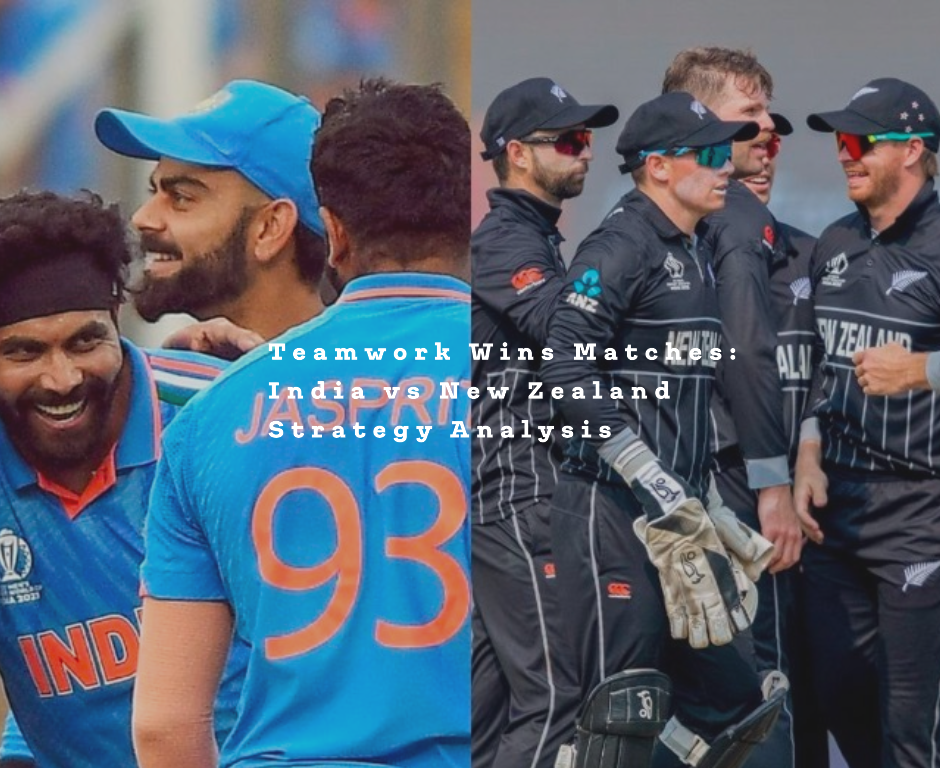
Introduction
As the cricketing world eagerly awaits the ICC World Cup 2023 semi-final showdown between India and New Zealand at the historic Wankhede Stadium in Mumbai, the focus extends beyond individual brilliance to the collective strategy that defines a team’s success. In this analysis, we delve into the teamwork dynamics of both India and New Zealand, exploring key strategies and player roles that might influence the outcome of this high-stakes encounter.
Understanding Team Dynamics
The Essence of Teamwork
Cricket, often referred to as a team sport, relies heavily on teamwork. It’s not just about individual performances but the seamless coordination of players working towards a common goal. In the context of a World Cup semi-final, the significance of teamwork amplifies as the pressure mounts.
Roles and Responsibilities
Each player in a cricket team is assigned specific roles and responsibilities based on their skills and strengths. Understanding these roles is crucial for analyzing the team’s strategy and predicting how they might approach the semi-final clash.
India’s Team Strategy
Top-Order Dominance
India’s top order, featuring the likes of Rohit Sharma, Shubman Gill, and Virat Kohli, is known for its dominance. The strategy might revolve around building a solid foundation with the top order, allowing the middle order to capitalize on the platform provided.
Middle-Order Dynamism
Players like KL Rahul, Suryakumar Yadav, and Shreyas Iyer bring dynamism to the middle order. The strategy may involve aggressive batting to maintain or escalate the scoring rate, providing stability if early wickets fall.
All-Round Prowess
The inclusion of all-rounders like Ravindra Jadeja adds depth to India’s strategy. Jadeja’s ability to contribute with both bat and ball might be leveraged strategically, giving the team flexibility in various match situations.
Pace Battery
Jasprit Bumrah, Mohammed Shami, and Mohammed Siraj form a formidable pace battery. The strategy may involve deploying these bowlers strategically to exploit opposition weaknesses and take crucial wickets.
New Zealand’s Team Strategy
Kane Williamson’s Anchoring Role
Kane Williamson, New Zealand’s captain, often plays an anchoring role. The strategy may involve Williamson stabilizing the innings while other aggressive batsmen play around him.
Explosive Batting Options
Players like Devon Conway, Glenn Phillips, and Daryl Mitchell provide explosive batting options. The strategy might focus on utilizing their power-hitting abilities in specific phases to accelerate the run rate.
Bowling Variety
New Zealand’s bowling attack boasts variety with Tim Southee, Trent Boult, and Mitchell Santner. The strategy may involve using each bowler strategically based on match conditions and opposition weaknesses.
Fielding Prowess
New Zealand is known for its exceptional fielding. The strategy may revolve around applying pressure on the Indian batsmen through sharp fielding, creating run-out opportunities, and saving crucial runs.
Factors Influencing Team Strategy
Pitch Conditions
The nature of the pitch at Wankhede Stadium will play a crucial role in determining team strategy. A flat track might encourage aggressive batting, while bowler-friendly conditions may prompt a more cautious approach.
Weather Conditions
Weather conditions, including humidity and dew, can influence the team’s decision to bat or bowl first. Teams may adjust their strategy based on the impact of weather on the playing conditions.
Opposition Strengths and Weaknesses
Understanding the strengths and weaknesses of the opposition is key. Teams may devise strategies to exploit the weaknesses of the opposition while neutralizing their strengths.
Pressure Situations
In a high-stakes semi-final, handling pressure situations becomes paramount. The team that manages pressure effectively and executes its strategy under duress is likely to emerge victorious.
Conclusion
As we approach the India vs New Zealand semi-final clash, the spotlight on individual brilliance must widen to encompass the collective strategies of both teams. Teamwork, strategic planning, and the ability to adapt to match situations will be pivotal in determining the winner of this crucial encounter.